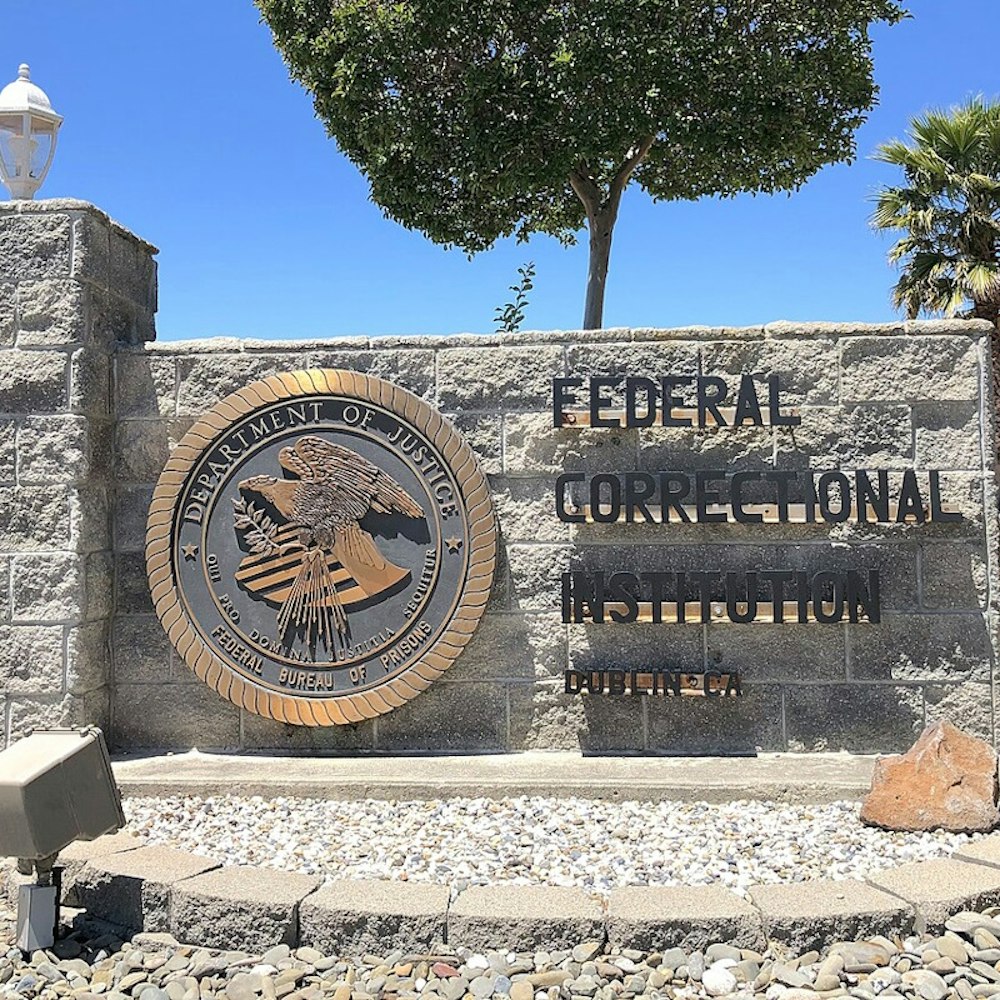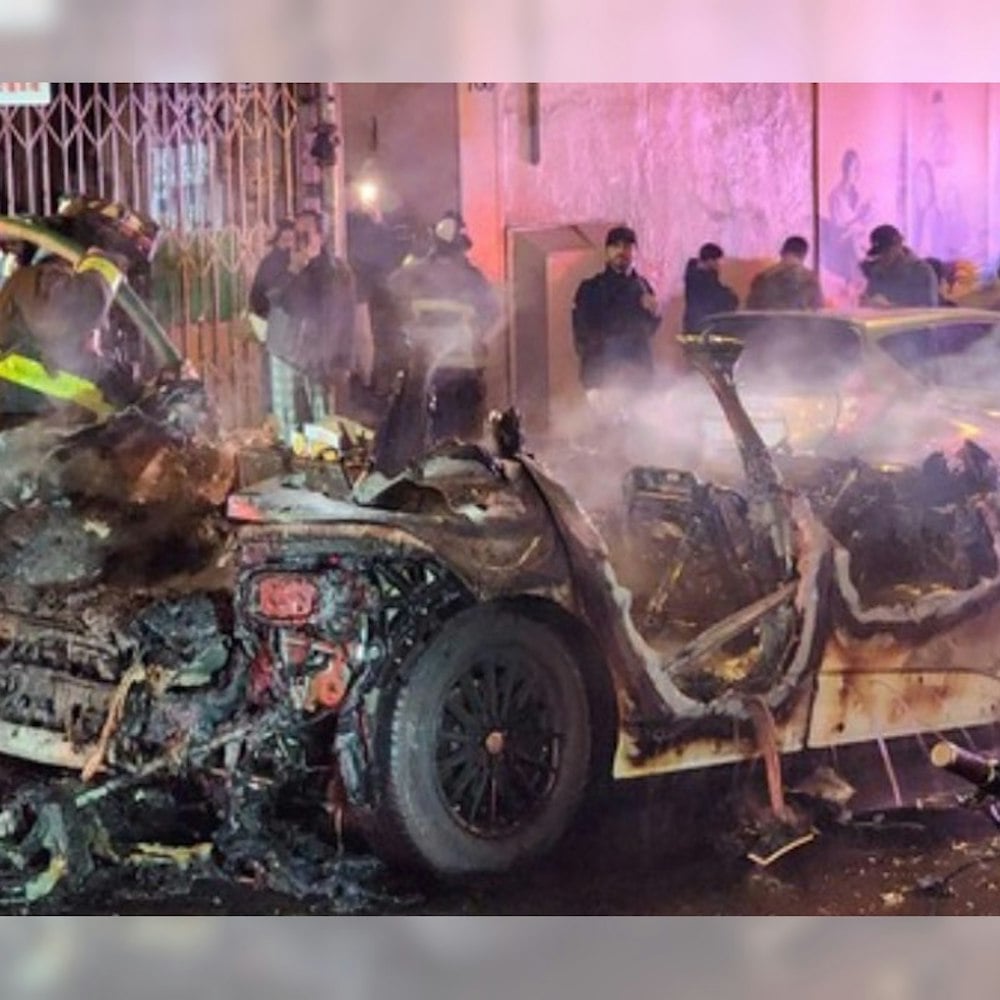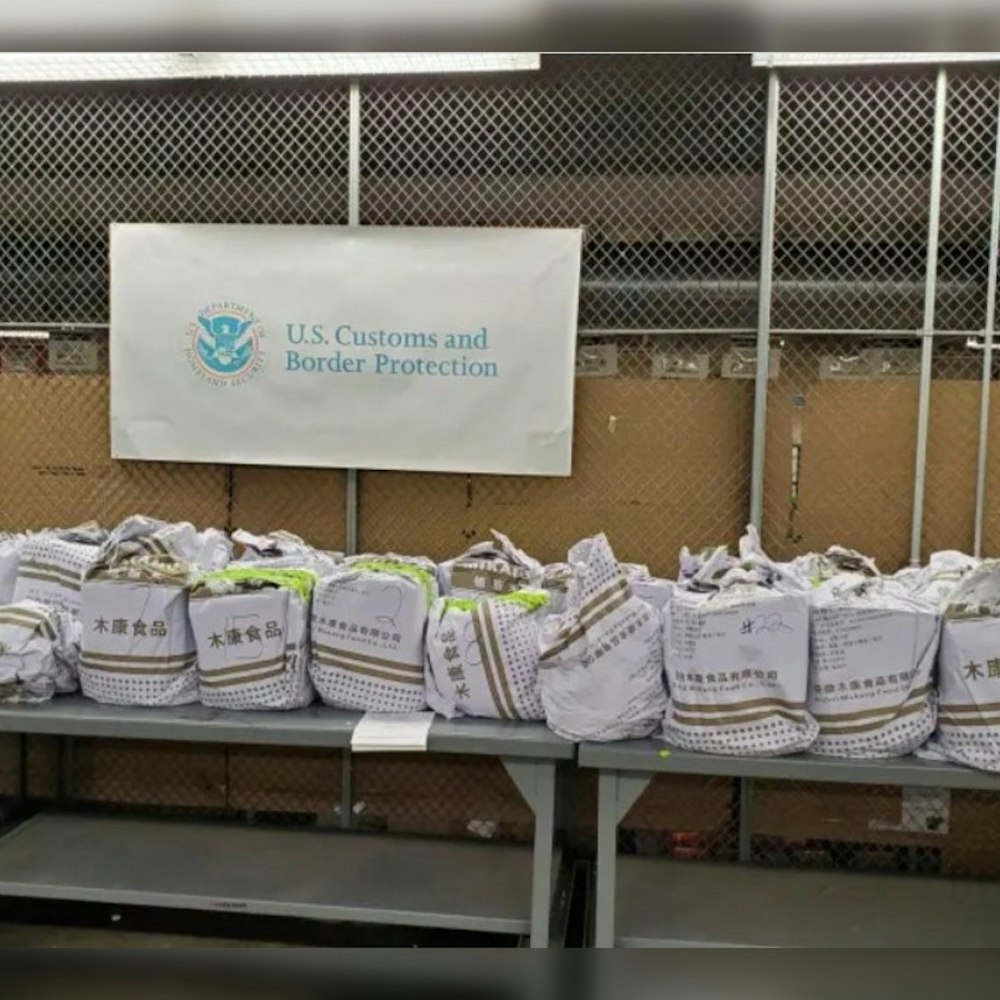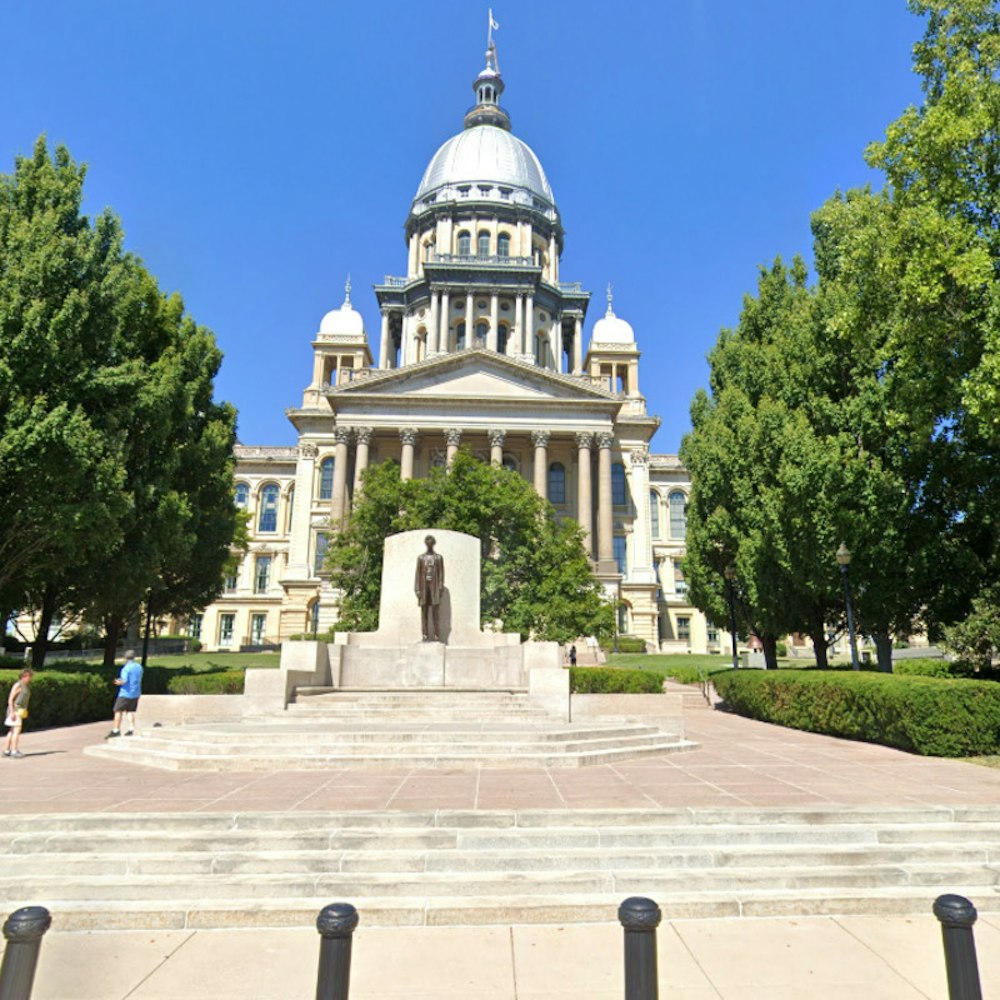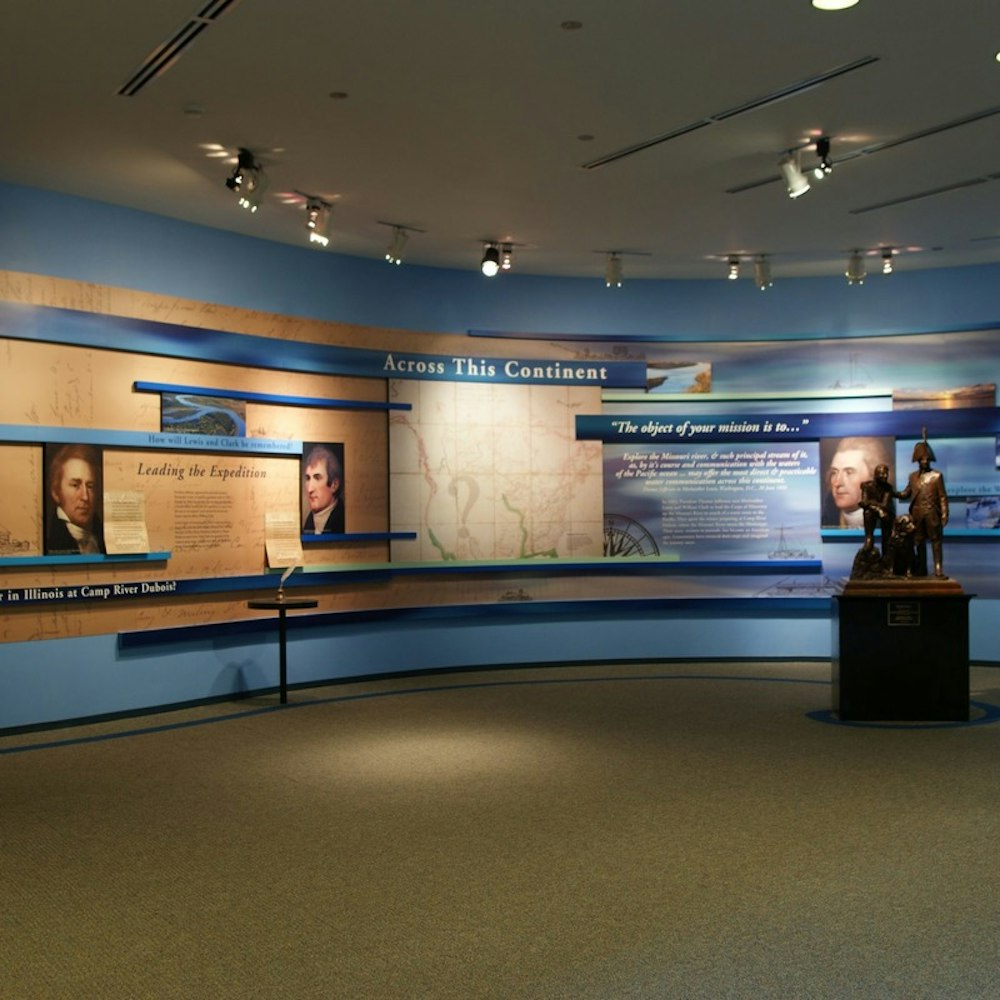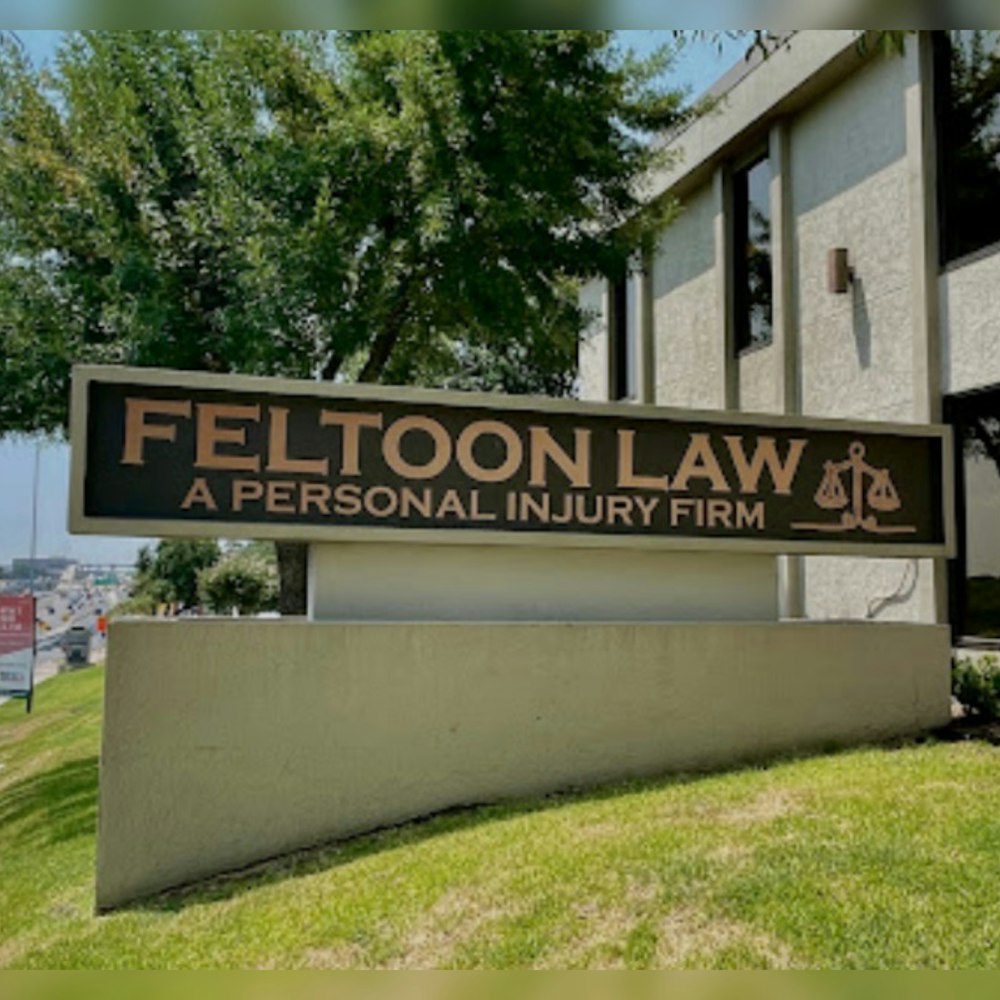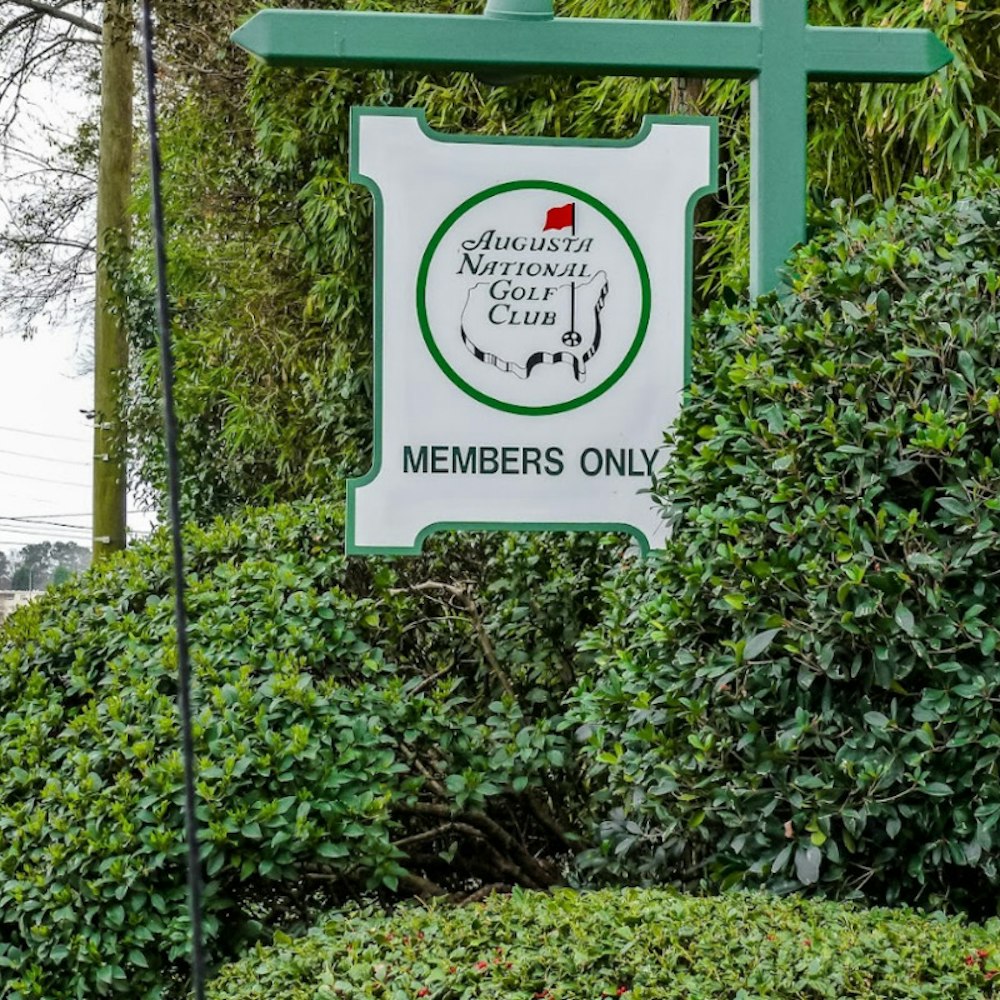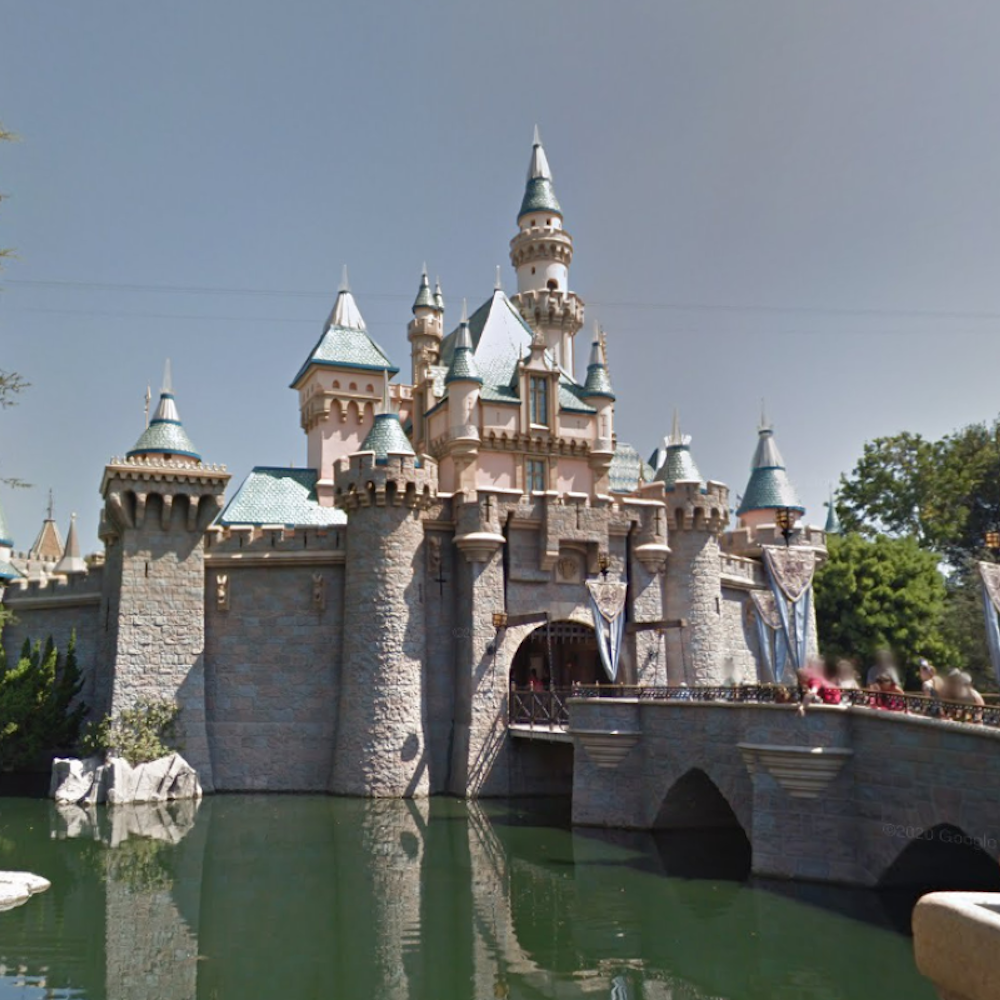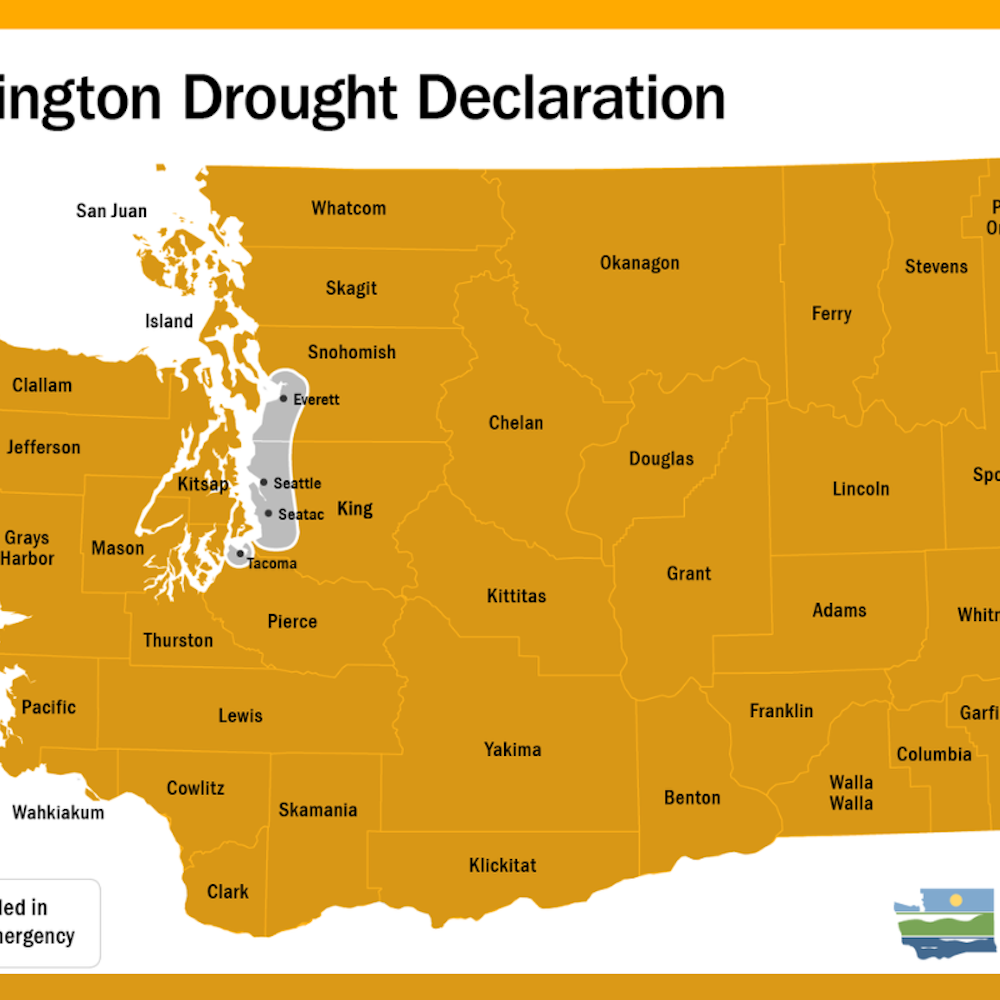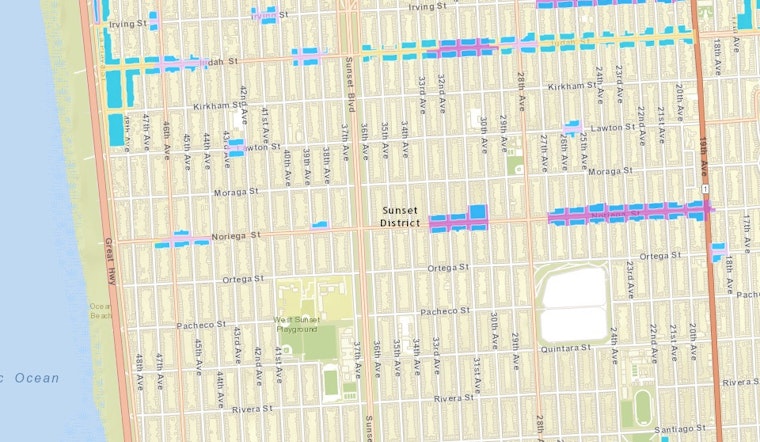
As the city’s housing crisis continues, the AHBP is meant to alleviate pressure by creating more below-market rate housing. Developers who set aside 30 percent of a building’s units for affordable housing would be allowed to exceed current height limits by two additional stories.
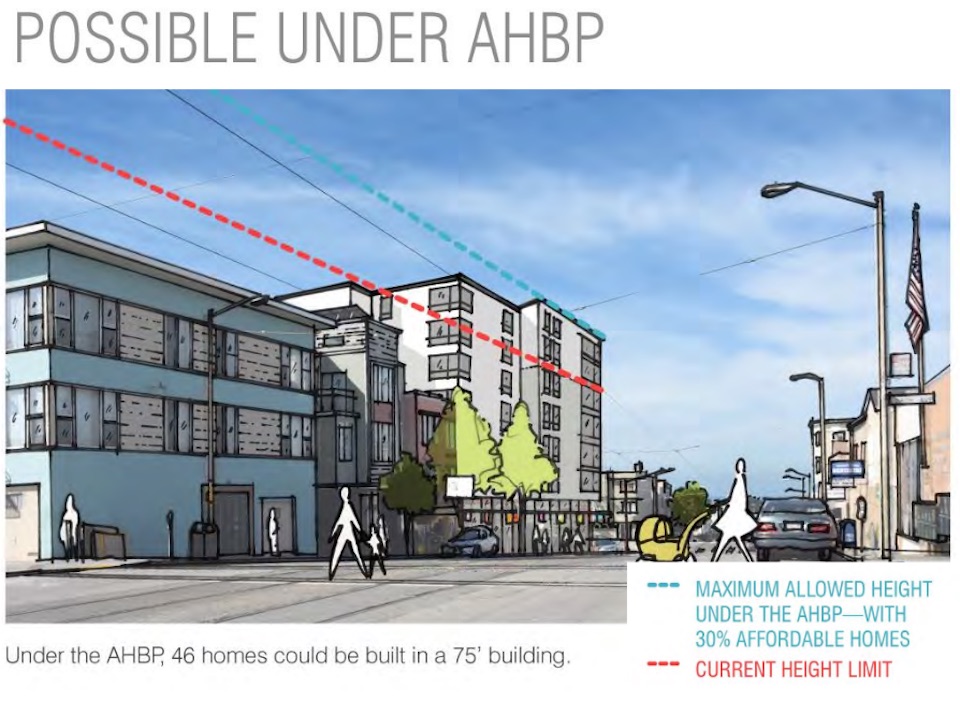 Height limits would go up to two additional stories, as long as 30 percent of the units are designated as affordable housing. (SF Planning)
Height limits would go up to two additional stories, as long as 30 percent of the units are designated as affordable housing. (SF Planning)
During the meeting at the Sunset Recreation Center, Tang said that unless San Francisco came up with its own local density plans, the state’s density requirements would kick in. Both Tang and SF Planning brought up the precedent set by a 2013 Napa court case, which determined that the State Density Bonus Law meant that local developers of affordable housing had to be granted a density bonus.
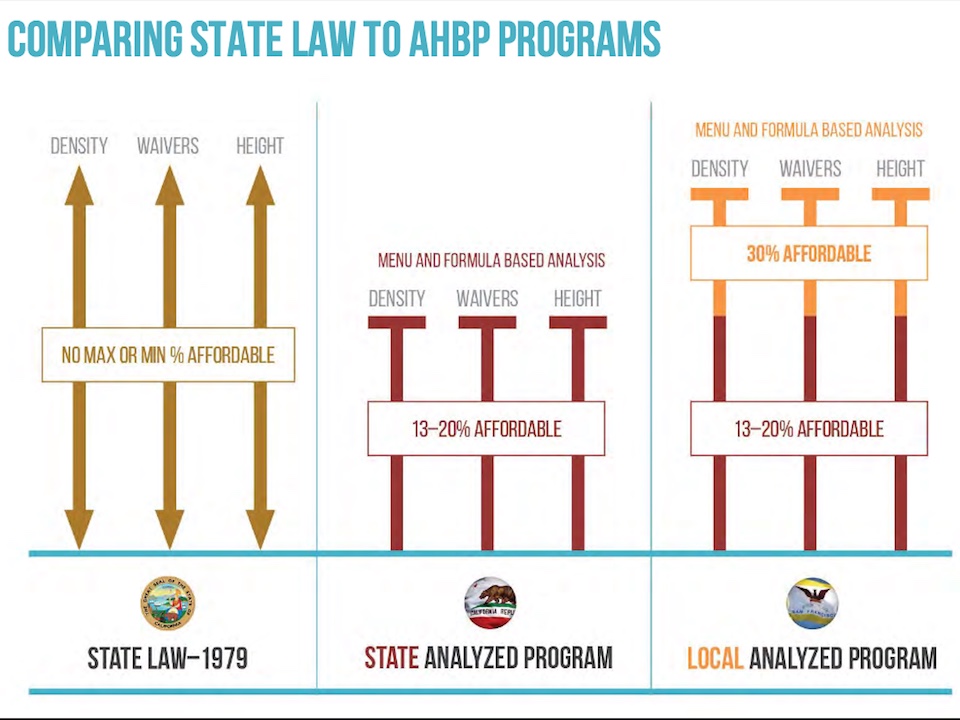 The AHBP would go beyond the State Density Bonus Law in building affordable housing. (SF Planning)
The AHBP would go beyond the State Density Bonus Law in building affordable housing. (SF Planning)
The Outer Sunset has largely missed the housing boom that has seen cranes rise over eastern neighborhoods like Bayview and SoMa over the last ten years. According to San Francisco Magazine, the Sunset has seen a net gain of 195 housing units, while SoMa has gained 10,500 new units. Under the proposed legislation, the Outer Sunset would see an increase of 3 percent in new units in total over a period of 20 years; Parkside would see 6 percent.
In total, there could be as many as 1,090 new units built in the Outer Sunset and Parkside. 327 of those would be designated as affordable housing, said Planning.
Most of the proposed changes for the Sunset would be along the commercial corridors of Judah, Noriega, and Taraval. Other changes would involve beachfront areas such as La Playa and the area around Sloat and Great Highway, which is already seeing new housing developments. Under the density bonus plan, new housing would go up on “soft sites,” underutilized parcels where new homes could be built without displacing residents.
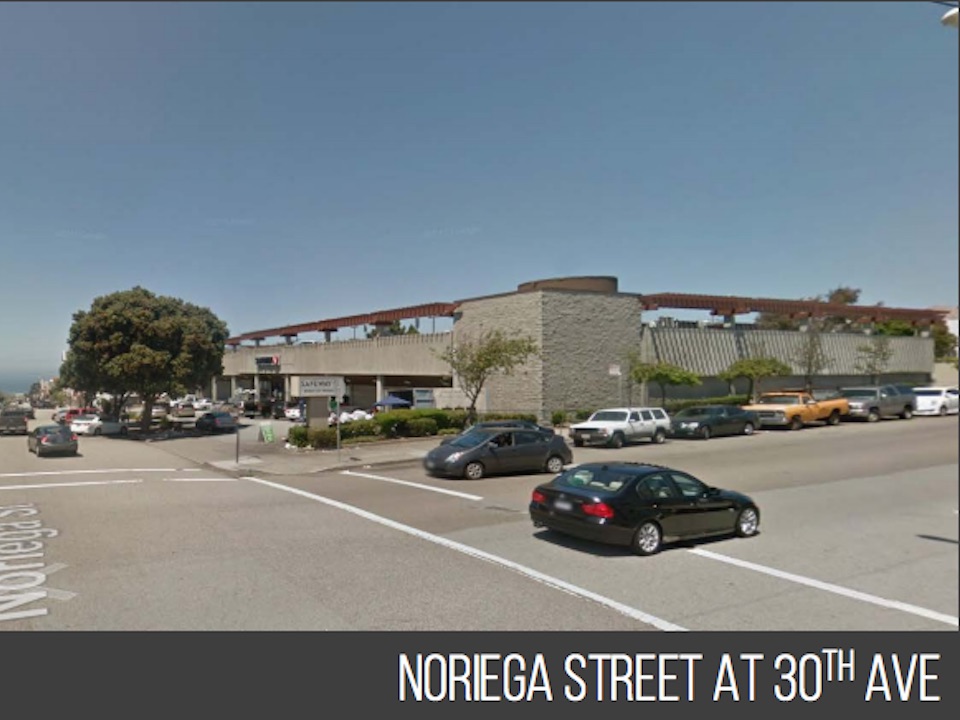
A soft site, currently a Safeway supermarket. (SF Planning)
As we’ve covered here previously, the AHBP is controversial. Many residents, neighborhood groups and citywide coalitions are opposed to the plan, fearing that widespread demolition and construction would change neighborhood character and displace existing small businesses and residents. Other concerns include adding additional vehicle traffic, straining the Muni system, and a new project approval process that won’t require builders to obtain conditional use permits.
Another contentious issue has been the eviction of small businesses, which are not rent-controlled. One resident asked, “‘New construction only’ means that you can demolish two-story businesses along Taraval and replace them with apartments?”
Dischinger confirmed that this could be the case. “Yes, new construction means that in order to use this program, you would have to make the determination that the existing building is financially less valuable than demolishing and reconstructing it,” she said.
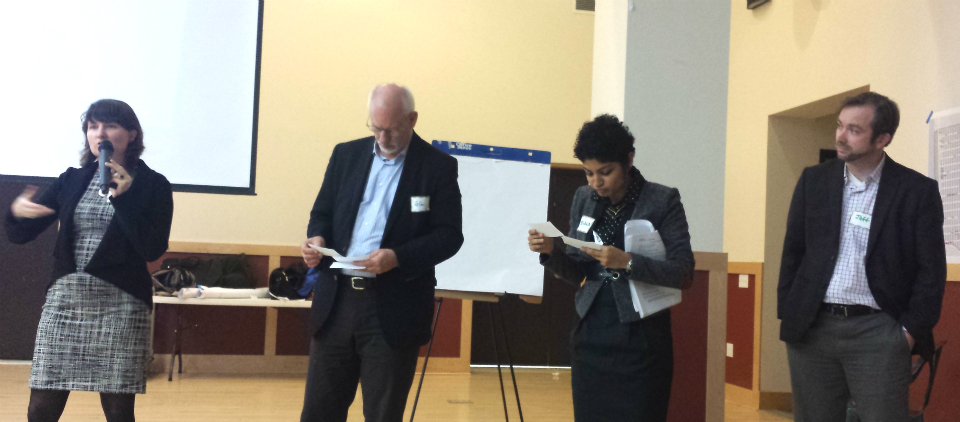
Left to right: Kearstin Dischinger, Gil Kelley, and Menaka Mohan of SF Planning, Jeff Buckley of the Mayor's Office (Fiona Lee/Hoodline)
Small businesses under threat of eviction due to the AHBP would receive support from the Mayor’s Office of Economic and Workforce Development small business assistance programs. They would also be notified early on in the process if a construction permit application is filed so that they can be relocated.
Both the Planning Dept. and Tang said the AHBP would result in a net gain of small businesses, rather than a loss, but residents were skeptical.
“This program is based on displacement, whether it’s existing small businesses or housing,” Sunset resident Lori Liederman said. “Yes, we need to build more affordable housing, but it can’t be at the expense of businesses and people who are here now.”
Given community feedback, the legislation has undergone several changes since the first public meeting in the area back in November 2015. According to AHBP Program Manager Kearstin Dischinger, they include:
Protection for rent-controlled buildings and units. If an existing building is rent-controlled, it cannot be demolished to participate in the program.
If participating in the AHBP, developers will not be able to build micro units or efficiency units.
AHBP developers will also not be able to add two extra stories to existing buildings. This is reserved for only for new construction under the program.
Another change would involve capping lot widths along commercial corridors. In response to community feedback that large buildings would change neighborhood character, lots cannot be merged together to create a lot that is larger than 125 feet in frontage. According to Menaka Mohan of Planning, the Outer Sunset currently does not have regulations around lot limits—very few neighborhoods in San Francisco do.
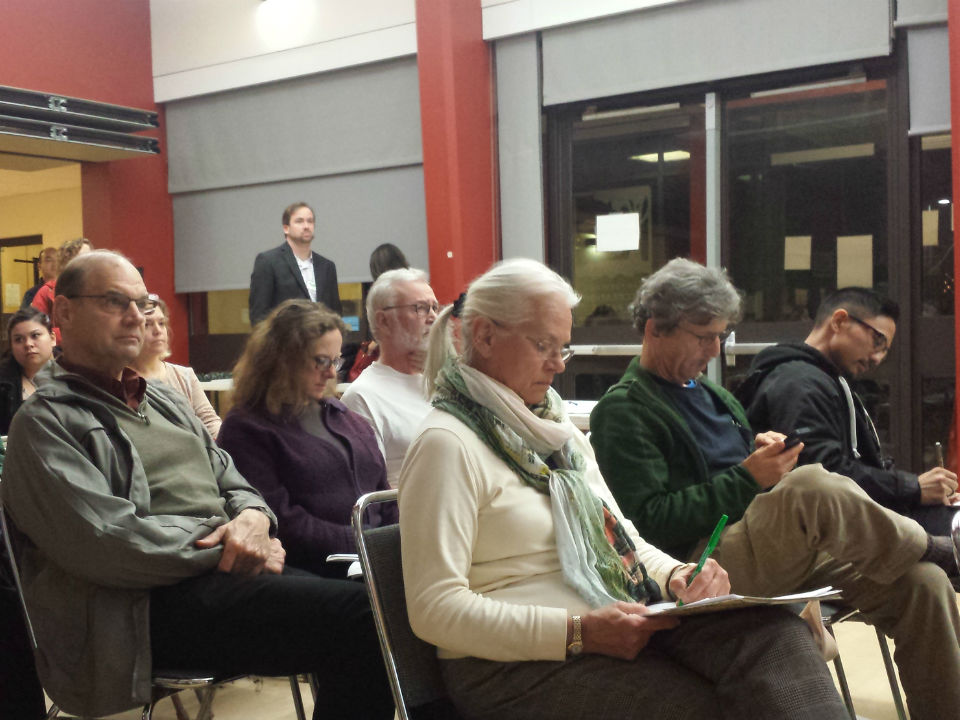
The audience at the District 4 AHBP Meeting. (Photo: Fiona Lee/Hoodline)
Despite the changes to the legislation, many Sunset residents at the meeting still have questions.
“I don’t think it develops enough affordable housing,” Dan Merer told us. He also pointed to other Bay Area cities which had defeated efforts to build more housing despite significant job growth in the area. “Are we building housing for San Jose? At some point, you gotta say this is a region-wide thing. This is not a NIMBY thing. Talk to San Jose about NIMBY. Talk to Palo Alto about NIMBY.”
Some residents did not believe that the city was doing enough to listen to the community. “I think it needs a lot more input, community input like this,” said David, who declined to provide a surname. "Otherwise, we don’t have a city that I want to be in.”
Other residents, while approving of the plan, believed that the city was not thinking enough about the impact the AHBP would have on the district.
“[Tang] has a very good approach,” said Sunset resident Shirley Chang, who has lived in the area for nearly 30 years. “I particularly like that it’s for the middle class. However, there are a lot of things we need to consider. The ocean view—that’s the reason I live in the Sunset. They say the buildings would only be six or seven stories, but I can still see how they would block the view.”
“My biggest concerns are traffic and parking. If you add another 350 units, it’s going to be a big problem,” said Christy Tam, who recently moved to the area with three kids. “Cars are driving too fast, there are too many people.”
She was also concerned about what an influx of new residents and families would mean for local students. “Do we have enough space for schools?” Tam added. “Now, many of the Sunset students have to be assigned to outside the district already. So if you add more families, it’s going to be an even bigger challenge.”
After neighborhood meetings wrap up, the Planning Commission will hold a hearing on the AHBP at its regular meeting, which starts at noon on Jan. 28th in Room 400 of City Hall. Should it move forward, it will then go before the Board of Supervisors' Land Use and Economic Development Committee, and eventually, the full board.
Previously:
1/13: Rent-Controlled Buildings Not Eligible For Density Bonus, Planning Says [Updated]
1/16: Activists Fear Rezoning Plan Will Reduce Rent-Controlled Housing, Despite Assurances
1/18: What Would The Affordable Housing Bonus Program Mean For D3?
